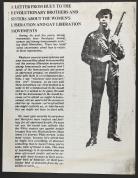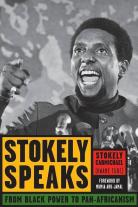Test Chronology: 00 Course Catalogue
Created by Jon Coburn on Thu, 06/06/2024 - 17:20
Part of Group:
Timeline documenting all significant events and primary materials explored on HST3107 The US Civil Rights Movement. Use the #HST3107 designation to discover these items in COVE when building your own maps and timelines.
Timeline
Chronological table
| Date | Event | Created by | Associated Places | |
|---|---|---|---|---|
| 1970 |
Huey Newton Avows Support for Women's Liberation Movement and LGBT Community#HST3107 |
Jon Coburn | ||
| 1971 |
Kwame Ture (Stokely Carmichael), ‘From Black Power to Pan-Africanism’ (1971)#HST3107 |
Jon Coburn | ||
| 1974 to 1988 |
Boston Busing CrisisFrom Wikipedia: The desegregation of Boston public schools (1974–1988) was a period in which the Boston Public Schools were under court control to desegregate through a system of busing students. The call for desegregation and the first years of its implementation led to a series of racial protests and riots that brought national attention, particularly from 1974 to 1976. In response to the Massachusetts legislature's enactment of the 1965 Racial Imbalance Act, which ordered the state's public schools to desegregate, W. Arthur Garrity Jr. of the United States District Court for the District of Massachusetts laid out a plan for compulsory busing of students between predominantly white and black areas of the city. The hard control of the desegregation plan lasted for over a decade. It influenced Boston politics and contributed to demographic shifts of Boston's school-age population, leading to a decline of public-school enrollment and white flight to the suburbs. Full control of the desegregation plan was transferred to the Boston School Committee in 1988; in 2013 the busing system was replaced by one with dramatically reduced busing. |
Jon Coburn | ||
| 13 May 1985 |
1985 MOVE BombingPhiladelphia PD bombing of MOVE, 1985 |
Jon Coburn |



